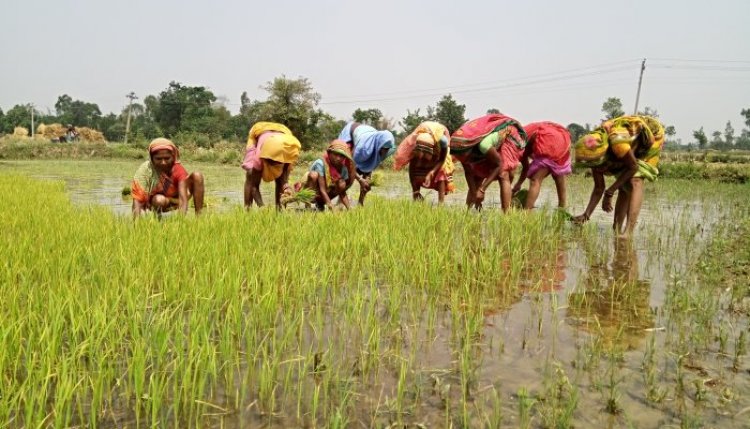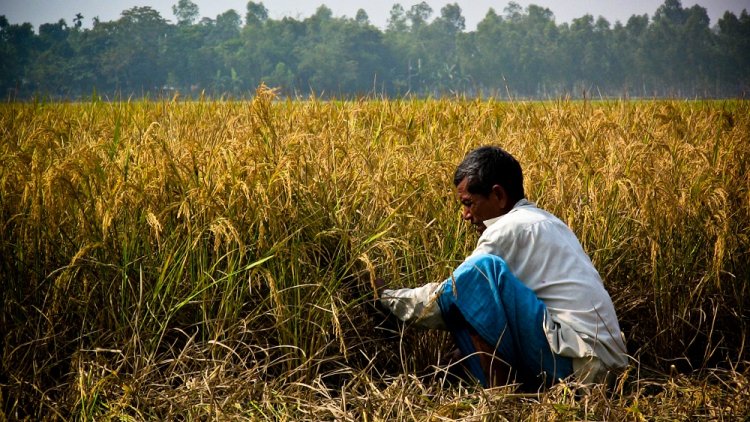Rising Rice: The Emergence in Nepal
Rice consumption in Nepal has doubled in the past 60 years, becoming the main staple food.

Introduction:
Over the past 60 years, there has been a dramatic change in Nepal's consumption of rice, which was traditionally seen as a status symbol and only enjoyed on special occasions. Ancient Nepal's indigenous populations relied on traditional grains including millets, maize, and barley as their main sources of nutrition. But as rice eventually displaced other staples, consumption rose sharply. As a result, Nepal switched from exporting rice to importing it, with India serving as the main supplier. This article examines the link between rice and Nepal throughout history, the causes of the change in food preferences, and the difficulties posed by rice imports.

Background Information:
Since 5000 BC, ancient civilizations along the Yangtze River in China and in India have been cultivating rice. Similar to Nepal, rice agriculture has a lengthy history there, with evidence pointing to its existence as early as the 1800s. Different parts of Nepal had various food customs due to geographical and cultural differences. Sampha (barley), dhido (stone-ground cornmeal), kodo (millet flour), and phaapar (buckwheat flour) were staple foods for people living in the Himalayas and hilly regions. Only a few people ate rice, mostly because it was expensive and was associated with wealth and position. Additionally, due to the low domestic demand, Nepal used to export rice to India.
-
Change in Rice Consumption:
In the 1960s, when Nepal had a catastrophic drought that led to widespread starvation and a high death toll, the situation shifted. With the assistance of the US, India started the Green Revolution during this time. India dramatically expanded its rice production and achieved self-sufficiency by implementing high-yielding seed varieties and fertilizers. While receiving funds, Nepal choose not to engage in agriculture and instead concentrated on giving rice as an alternative to the impacted population. People in the impacted areas started to view rice as a staple food, which changed their perception of the food. As a result, alternative grain farming decreased, aggravating the problem of food scarcity in certain regions.
-
Imports of rice and related issues:
In 1996, Nepal and India signed a bilateral trade agreement that abolished levies on basic items like rice, lentils, flour, and other agricultural products. While India benefited from this, Nepal found it difficult to gain from the pact. As a result, agricultural productivity decreased as imports from India rose and the rural people began moving to the cities or looking for work abroad. The World Food Program and the Nepalese government supplied rice in impacted areas to solve food shortages. Additionally, the increase in remittances from overseas enhanced the standard of living by making it possible for individuals to buy rice. So, from 4.29 million metric tons in 2007/2008 to 5.15 million metric tons in 2017/2018, Nepal produced more rice. But for the import of long-grain rice, particularly the favored basmati variety, Nepal continues to rely on India.
-
Future Concerns and Possible Solutions:
Due to climate change and global warming, the dependence on rice imports from India could be at risk. India may stop exporting grains to Nepal if there is a shortage. Nepal should prioritize the growing of alternative grains and look into methods like the System of Rice Intensification (SRI) to increase rice output in order to reduce this risk. In some parts of Nepal, SRI has already started to be implemented. To guarantee a balanced diet for the populace, it is essential to encourage the production of other grains. For a sustainable and healthy future in Nepal, adopting alternate food sources and diversifying farming practices will be crucial.
Conclusion:
Over the past 60 years, there has been a considerable growth in rice consumption in Nepal, replacing indigenous grains as the primary staple diet. Due to this shift, Nepal is now primarily dependent on India for its rice imports after previously exporting rice. However, there are drawbacks to this strong reliance on imported rice, such as a loss in the production of other grains and possible threats from climate change. Nepal has to diversify its agricultural methods, give priority to the production of alternative grains, and lessen its reliance on rice imports in order to secure a sustainable and healthy future.
What's Your Reaction?




































































































